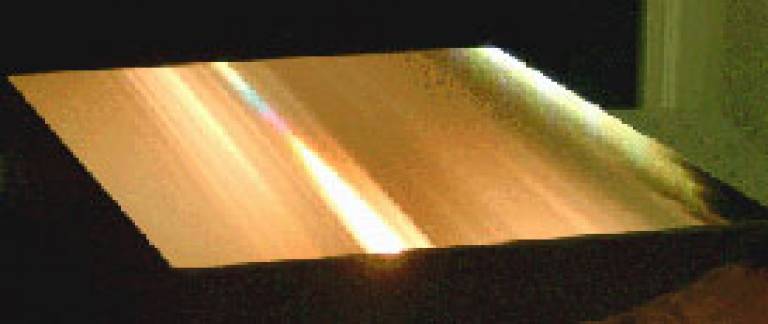UCL scientists design and build pioneering spectrometer
12 November 2003
A team of scientists from UCL's Optical Sciences Laboratory, in the Department of Physics & Astronomy, have designed and built a bench-mounted high-resolution optical spectrometer (bHROS) for the eight-metre Gemini-South telescope in Cerro Pachon, Chile.
 Constructed at UCL, it was shipped to Chile in February, where it has been reassembled
and tested. When it is ready for operation in 2004, it will be one of the most
sensitive astronomical spectrometers in the world.
Constructed at UCL, it was shipped to Chile in February, where it has been reassembled
and tested. When it is ready for operation in 2004, it will be one of the most
sensitive astronomical spectrometers in the world.
Located in a room beneath the telescope, the spectrometer is connected by several 35m optical fibres that feed light from the telescope.
Team member Professor Mike Barlow said: "The spectrometer splits light into a spectrum of component wavelengths using an echelle diffraction grating, which gives high resolution. It is designed to analyse visible light from stars, galaxies and quasars at very high spectral resolving powers. bHROS's resolving power is higher than that delivered by any other spectrometer on this class of telescope."
The spectrometer will be used to determine the abundances of elements in the oldest stars in our galaxy and nearby galaxies. This will help to build an accurate picture of how galaxies have formed and evolved. Another important application of the spectrometer will be to detect new planets around other stars. More than 100 planets have been detected by high-resolution optical spectrometers picking up 'wobbles' caused by orbiting planets.
Professor Barlow said: "So far, only Jupiter-size planets have been detected.
The higher resolving power and great stability of bHROS should allow us to detect
smaller, lower-mass planets. bHROS can also detect spectra of distant quasars.
This should increase understanding of how the earliest stars influenced the
primordial material left over from the Big Bang."
Image: Echelle grating.
To find out more about the project use the links below.
 Close
Close

